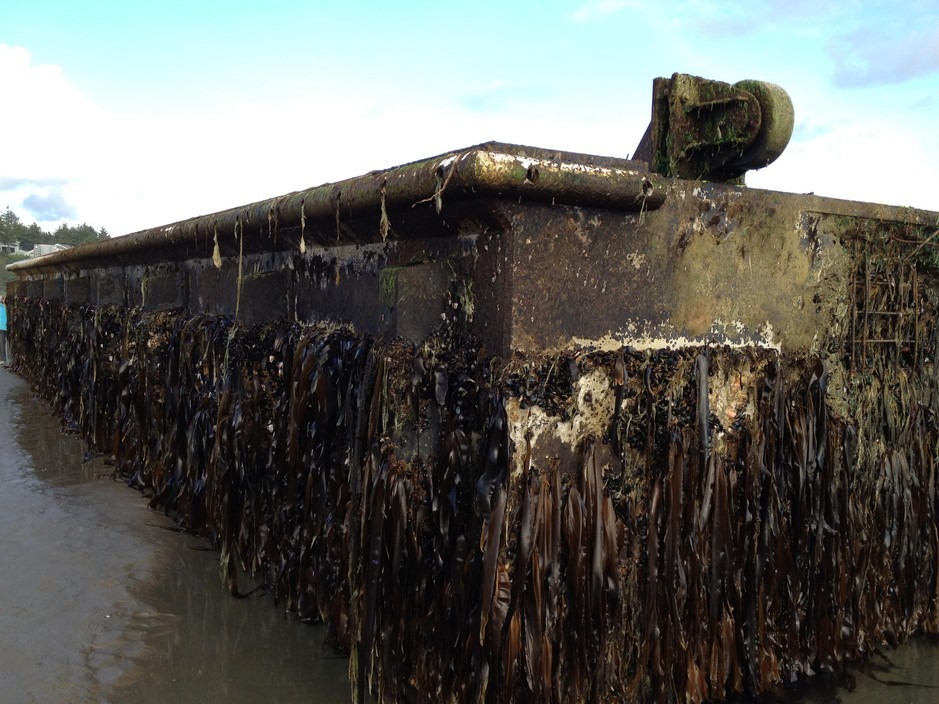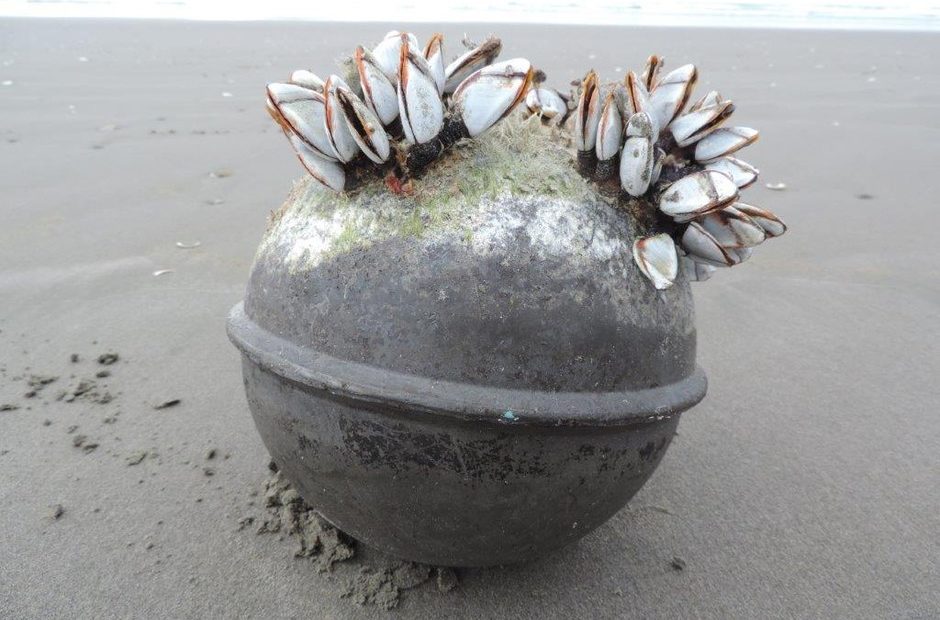
Plastic’s New Threat: Indestructible Rafts For Ocean-Crossing Invasive Species
Read On
BY JULE GILFILLAN / OPB
The 2011 earthquake and tsunami that ravaged Fukushima, Japan, also triggered tsunami warnings for our coastlines here in the Pacific Northwest. And while the resulting waves did not turn out to be catastrophic when they reached our local shores, those same forces delivered a wake-up call.
In June 2012, a large concrete dock washed up onto Oregon’s Agate Beach near Newport. It was one of four docks that had been cut loose during the tsunami and drifted all the way across the Pacific from the fishing port of Misawa, Japan.
“It was deeply coated by Asian species,” said John Chapman, an adjunct professor at Oregon State University’s Hatfield Marine Sciences Center. “My eyes were telling me that these were Asian species, but my brain was not willing to accept that.”
At the center of Chapman’s disbelief was a long-held assumption that species could not survive a trip across the ocean on floating debris.
“We thought that that was impossible, and we were so wrong,” he said. “And so in science when you find out you’re wrong, you steer straight at that.”
What Chapman and his colleagues realized was that the tsunami had triggered a huge transoceanic “biological rafting” event, unprecedented in recorded history. It surprised them because earlier earthquake-tsunami events from 1896 and 1933 did not result in any documented influx of Asian marine life to our shores.
Since the arrival of the Misawa dock alerted scientists to the phenomenon, OSU and other North American researchers have documented more than 350 living Japanese marine species arriving on the North American Pacific coast and Hawaii. One of the things these species had in common was they showed up on floating debris composed of man-made materials — mostly plastic.
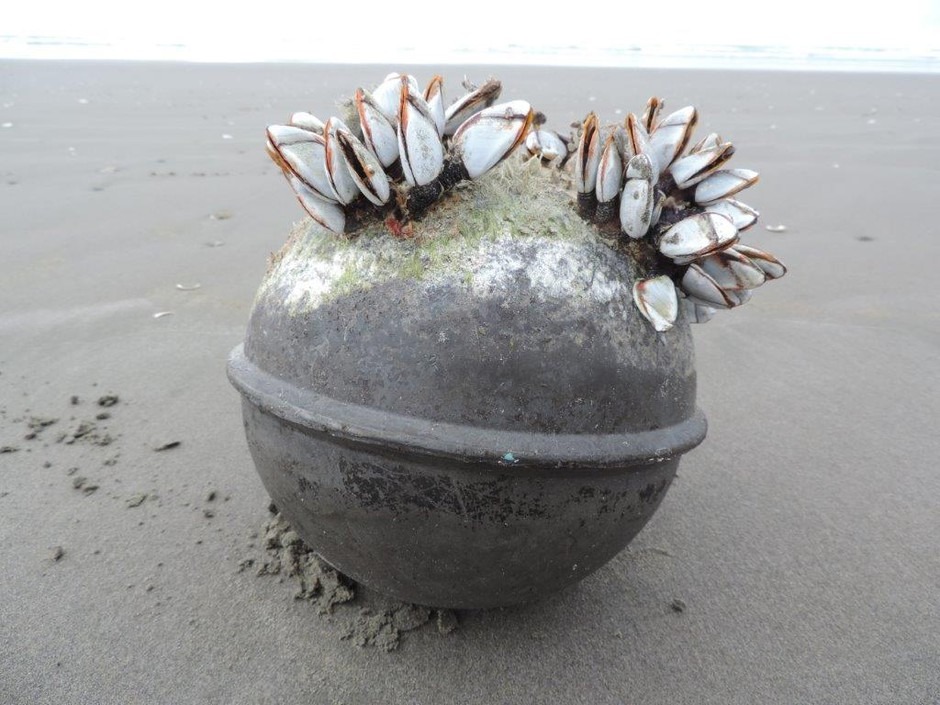
Marine organisms like these gooseneck barnacles are crossing the Pacific Ocean to North America by hitching rides on floating debris composed of man-made materials — mostly plastic.
Courtesy of Russ Lewis
OSU researchers have also found evidence that rafts made of plastic even host reproducing generations of sea life in transit.
Plastic was a revelation to Americans of the 1950s. Today, the nearly indestructible material — used for fishing nets, nautical floats, and all manner of consumer products — is practically impossible to avoid. It shows up in beach debris all over the world.
“A tree or a branch or even a wooden ship would disintegrate and fall apart before a significant amount of it could cross the ocean,” Chapman said. “But now the plastic and the fiberglass and the concrete and the steel objects that we make — they don’t disappear. They carry these things across.”
Dangers Ahead
OSU marine ecologist Jessica Miller analyzes slices of mussel shell through a mass spectrometer. She’s looking for traces of naturally occurring elements that are incorporated into the shell’s matrix as it grows. These elements are picked up in proportion to how much of it is present in the waters where that growth is taking place.
“It’ll tell us how much barium there is, how much strontium — elements that are enriched in coastal waters, compared to the open ocean. Then we can actually figure out where in the life history of these mussels they were living,” Miller said.
Knowing where the mussels’ man-made rafts started and ended up also provides information about what routes those plastic flotillas are taking across the ocean. What is less clear is how big a threat these alien organisms could pose to our local ecology.
At least one of the mussels found on Japanese tsunami debris that arrived on the Oregon Coast is an invader — first in Japan and then in the Pacific Northwest. “It invaded Japan from the Mediterranean and it’s already invaded in Southern California,” Miller said.
Miller and her colleagues have found this mussel on over half of the tsunami debris items they’ve collected.
“If a species such as that could get established here, it could compete with local species,” she said.
Miller also documented a Japanese shore crab, or Hemigrapsus sanguineus, on the Agate Beach dock. That same species invaded the East Coast of the United States, where it was first detected in 1988. Since then it has overwhelmed the region’s native crabs.
‘We Don’t Know What This Is Going To Do’
While the accumulation of new species has decreased from the levels reached in 2012-14, the researchers continued to find new species right into 2018.
These foreign species bring microscopic hitchhikers, too.“We have diseases and parasites that are being introduced, which came with the tsunami debris as well, that compete with the things we want,” Chapman said.
So far, none of the raft-riding species appears to have gained a foothold on the Oregon Coast, but the volume of debris that is carrying them across the ocean is only increasing.
Moreover, plastics that do not stay intact disintegrate into microplastics. These tiny particles are then consumed by fish and other sea life, and through the food chain, are consumed by us.
“We really are changing the planet in an irreversible, ugly way,” Chapman said. “We have to eat the plastic every time we eat a fish and it doesn’t matter how wealthy you are, you’re not protected from that.”
Additionally, plastic rafts and their on-board communities can move around the ocean for decades, so researchers expect to observe new species continuing to hitch a ride to our shore on plastics well into the future.
“Every place is connected with every other single place on the planet. We don’t know what this is going to do, which is the worst thing of all, perhaps,” Chapman said. “We just know that it’s a very big phenomenon.”
Copyright 2019 Oregon Public Broadcasting. To see more, visit opb.org
Related Stories:
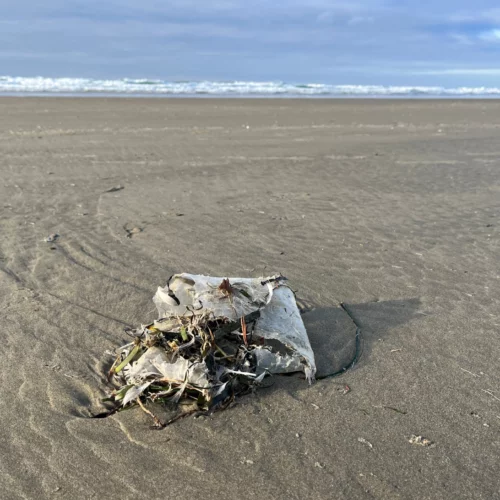
Foam dock floats, laundry filters, hotel shampoo amongst newest bids to reduce plastic pollution
Everywhere they look, Pacific Northwest scientists find teeny-tiny plastic pollution. Broken down particles are in our water, falling out of the air, in salmon, shellfish and in our own bodies. Scientists, environmental advocates and Democratic lawmakers in Olympia and Salem have seen enough to make them seek more regulations.
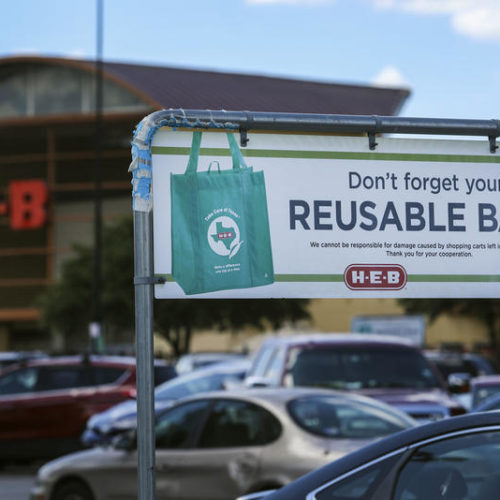
COVID-19 Has Resurrected Single-Use Plastics. Are They Back To Stay?
COVID-19 is changing how the U.S. disposes of waste. It is also threatening hard-fought victories that restricted or eliminated single-use disposable items, especially plastic, in cities and towns across the nation.
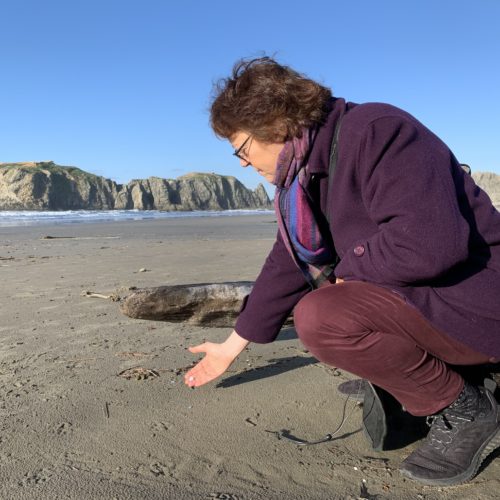
Turning Pollution Into Art With A Purpose On The Oregon Coast
This particular stretch of the Oregon coastline is famous for being pristine and wild. But train your eyes down a little closer to the beach and sand as Angela Haseltine Pozzi so often does, and even here you’ll find bits of plastic.

